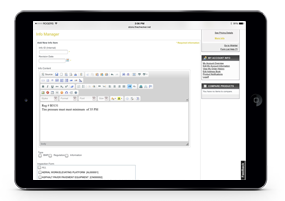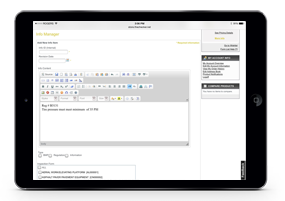You can’t argue against following best practices.

In any area of a business, identifying and implementing best practices is a recipe for success. Best practices, after all, are proven methods of maximizing the value of operations.
Nowhere is that truer than with inspections and audits. Whether an organization follows best practices in their audits and inspections can be a matter of life and death. It only takes one overlooked item, in a system without sufficient checks, to create a serious safety hazard.
Less dramatically, but very importantly, companies that don’t follow audit/inspection best practices are losing a substantial amount of potential value. Best practices can reduce costs and increase the risk-prevention effectiveness of audits and inspections.
However, while audit/inspection best practices are simple and obvious at a general level—for example, you should always inspect worksites before each shift—they can get very complex at a specific level. A typical business today might be inspecting highly technical equipment, complicated facilities, storage of risky materials, or other intricate items.
When auditing or inspecting at such a complex level, best practices can be difficult to remember—particularly for personnel responsible for auditing or inspection multiple, varied assets or processes. But that’s true only for people, not for computers.
In many cases, personnel can’t possibly be expected to have all the information in their head to effectively inspect everything they’re responsible for. We’ve seen someone who had to carry around 12 binders just to have all the pertinent information about following best practices!
Computers can make all that information available on one screen at the press of a few buttons, with no chance of human error or oversight.
That’s where audit/inspection software, such as The Checker Software, comes in. Our cloud-based software has many benefits, and among them is its Info Manager module, which allows information about best practices to be readily available to anyone with an internet-connected device (tablet, phone, or PC).
With the Info Manager we have made it easy to attach information to any question or checklist item that can help the auditor or inspector. You can attach documents, images or even links to the information you want to make available.
The flexibility of the Info Manager means you can use it for all kinds of helpful information, including:
- A list of relevant recognized best practices
- Pictures of items, areas, etc. with “Yes” and “No” versions, or whatever gradations you wish, to help guide the inspector’s evaluations
- Graphics to show how specific audits or inspections should be conducted
- Relevant regulations and standards
- Relevant company policies and procedures
- Tips for how to conduct specific audits and inspections more efficiently and accurately
- “How-to” videos
- FAQs about specific audits and inspections
- Any additional text, image, or video directions that are necessary.
The Info Manager is easy to use and helps take the complexity out of auditing and inspecting processes, whatever industry you’re in.
And it’s just one of the many benefits of The Checker Software! Our software can transform audits and inspections from an ad-hoc effort into a comprehensive, value-added business program.
Takeaway
Audits and Inspections have become so complex that it can be difficult for personnel to remember and follow established best practices. You need your audit/inspection software to be able to store best-practice information in “one place” and instantly share it with the people who need it—eliminating reliance on human memory and the need to carry around paper manuals, guides, etc., while saving time.











